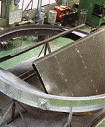Languages
Dampers
Features
Dampers have a wide range of applications in manufacturing lines. For example, they are
used to control the amount and direction of air flow in the duct line and to block isolate toxic gases. Dampers come in a variety of forms depending on the application.
Types of
KC Cottrell produces seven types of dampers: louver, guillotine, diverter, wafer (butterfly), poppet, radial vane, and stack damper. Depending on their operating method, dampers can be classified into isolation type and modulation type. They can also be categorized into zero leakage damper and low leakage damper depending on the allowed leakage rate.
|
Louver Dampers Controls the amount of airflow into a duct Manual and automatic operation Can be used for operation at high speeds Applicable for low leakage and zero leakage |
 |
Stack Isolation Dampers Used in stacks Suitable for protecting equipment or blocking rain during downtim |
|
|
Guillotine Dampers Suitable for intermittent operations A drawback is low operating speed Horizontal, vertical or lateral installation |
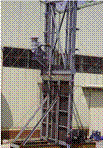 |
Tandem Dampers Zero Leakage Type that has similar function with Double Louver Damper Decrease in cost due to lower Damper Size and Weight |
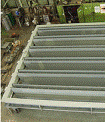 |
|
Diverter Dampers Main application is HRSG Flow rate inside the damper can be set to 45m/sec More economical than using two damper sets Operation possible at high temperatures |
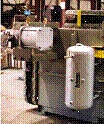 |
Radial Vane Dampers Installed before or after the fan Used for speed and flow rate control |
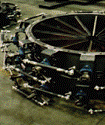 |
|
Wafer Dampers Mainly used in circular duct lines Economical and appropriate for low pressure conditions Double & single wafer are available depending on the leakage rate |
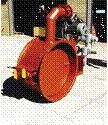 |
PoPPet Dampers Used for explosion prevention in times of emergency in production lines Applicable for high speed operation |
 |



